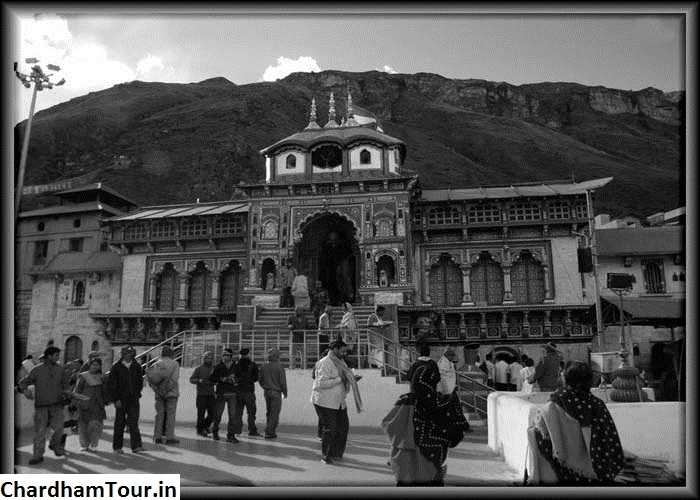The temple is an incredibly stunning, one of a kind a visual treat for everyone visiting it. The temple is a mark of purity and deep spirituality for every Indian ever since the ancient ages. But how did this temple came into being? What was the reason behind its creation? Why was it built in the first place? There are so many questions that arise in our minds when we think about this holy Dham. Here are the answers to all your questions and doubts:
Mythological Account:
There are two primary mythological accounts related to the creation of Badrinath shrine which are:
- Once when Lord Vishnu was criticized by a sage for his careless and luxurious lifestyle, he decided to sit in deep meditation as a way of asking for forgiveness. It was in Badrinath where he had sat down to perform this meditation and seeing this, his wife goddess Laxmi decided to convert herself into a jujube tree (a commonly occurring tree in that area, hence its name) and covered him from the top in order to protect him from the harshening weather conditions.
- Badrinath Dham has found its mention in various Hindu holy books as well as Mahabharata. This place is mentioned as the destination where the Pandava brothers along with their wife Draupadi had stopped on their way to heaven. They had stayed for a while in the village of Mana inside cave, which is situated in close proximity of 3 kms from the main temple of Badrinath. There are also several other tourist attractions located around the temple which mark the presence of gods in this area. Places like Vyas and Ganesh Gufa the place where the iconic epic of Mahabharata was written by sage Vyas and his scribe lord Ganesh, also adds on to the spirituality and mythological fascination of this place.
Lord Shiva in Badrinath:
Another interesting mythological account of Badrinath is about the fact that initially this Dham had served as the home for Lord Shiva and his consort goddess Parvati. Once after they had come back from their stroll in the Badri valley, shiv and Parvati found a small baby on their doorstep right on their entrance. The baby was crying frantically and not stopping. Goddess Parvati decided to go ahead and pick up the child but was stopped mid-way by lord Shiva who told her not to do so since they didn’t know who the child belonged to where he came from and the absence of footprints in the vicinity added on to his suspicion. Parvati disregarded Shiva’s concerns and she wanted to make the baby comfortable, she went ahead and picked the baby up and took him inside. The child was visibly very happy and comfortable inside the house and was looking at Shiva gleefully. By evening when Shiva and Parvati again came back home from outside the house was closed from the inside. The lord was faced with only two options – to either burn the entire house down or to leave the place and go somewhere else. They chose the other option and left the place to Lord Vishnu who had taken the form of a crying baby.
Historical Account:
The exact date of creation of Badrinath Dham temple is still unknown but its first mentions have been of the idol of the presiding deity of Badrinath ji. The idol can be dated back to 1750 – 500 BC as per the Vedic scriptures. Initially, till the 8th century the temple was believed to be a Buddhist monastery due to its architectural design. However in an attempt to reignite the feeling of Hinduism among the Indian population, Adi Shankaracharya approached king Kanak for his help to get rid of all the Buddhists in the area and establish a temple relevant for Hindu pilgrimages dedicated to Lord Vishnu in its place. After this the temple has gone through a number or renovation and re-planning phases since it used get destroyed as a result of avalanches and landslides. The most recent structure was re-constructed and expanded during the 17th century by the kings of Garhwal. Ever since then, Badrinath Dham has not only played a pivotal role in the Char Dham Yatra of India but is also a crucial pillar of the Chota Char Dham Yatra of Uttarakhand along with being one of the holiest Divya Desams among 108 other Desams.


 Call
Call WhatsApp
WhatsApp Enquiry
Enquiry




Leave a Reply